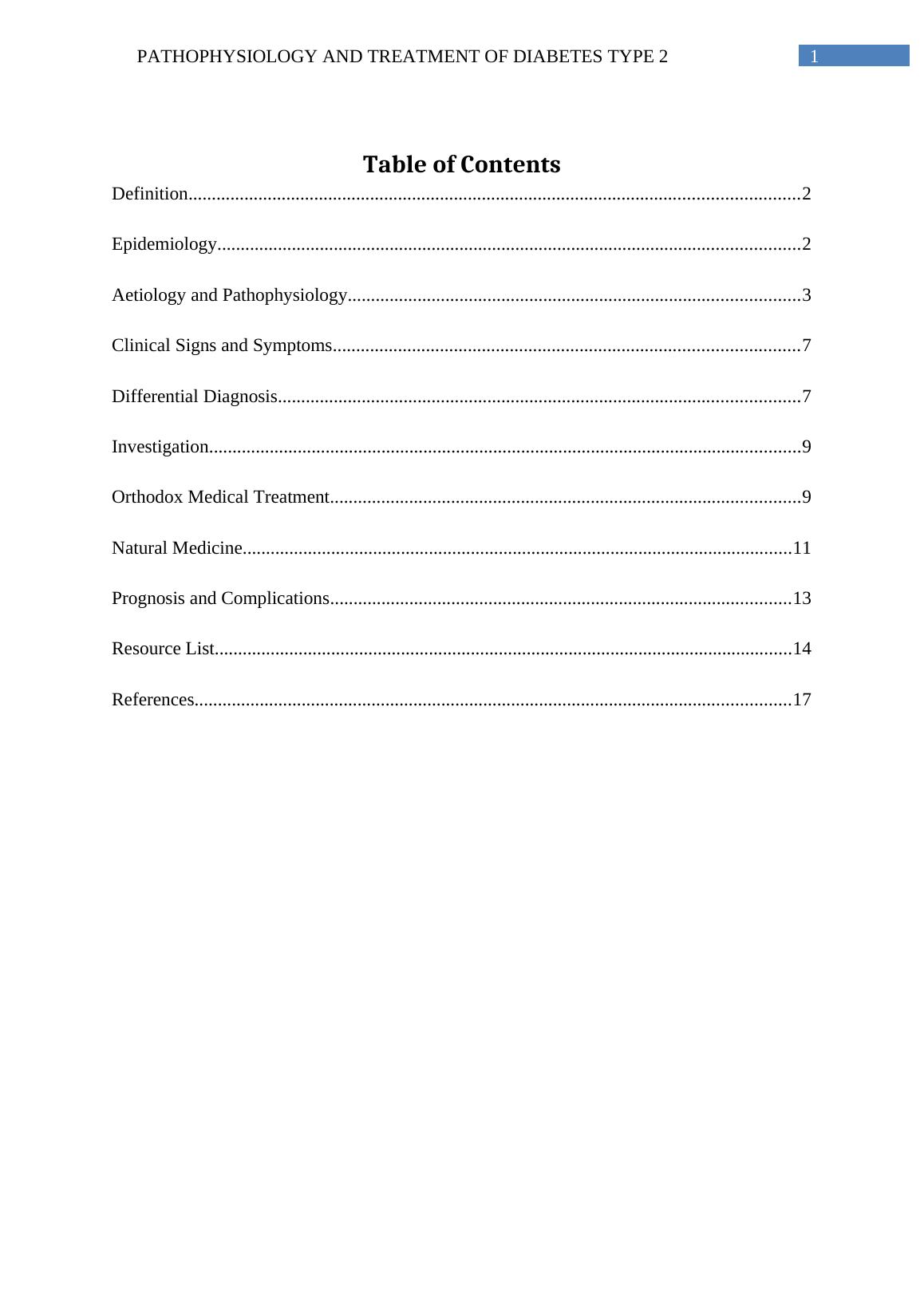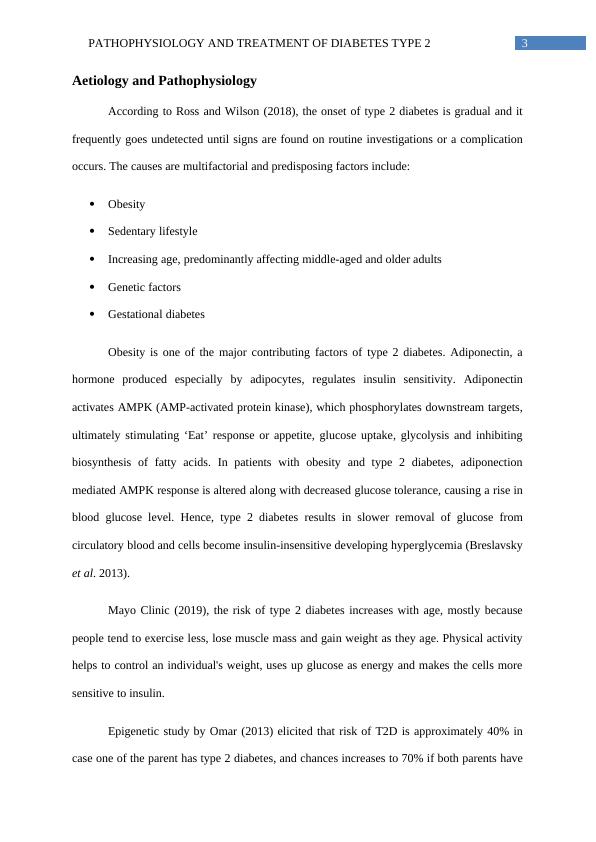Pathophysiology and Treatment of Diabetes Type 2
Discuss the definition, epidemiology, aetiology and pathophysiology of Type 2 diabetes, and provide a limited discussion on orthodox medicines and natural approaches for treatment.
21 Pages4308 Words491 Views
Added on 2022-11-26
About This Document
This document provides an in-depth understanding of the pathophysiology and treatment of diabetes type 2. It covers the definition, epidemiology, aetiology, and clinical signs and symptoms of the disease. It also discusses differential diagnosis, investigation methods, and orthodox medical treatment options. Additionally, it explores the role of natural medicine and provides insights into the prognosis and complications of type 2 diabetes.
Pathophysiology and Treatment of Diabetes Type 2
Discuss the definition, epidemiology, aetiology and pathophysiology of Type 2 diabetes, and provide a limited discussion on orthodox medicines and natural approaches for treatment.
Added on 2022-11-26
ShareRelated Documents
End of preview
Want to access all the pages? Upload your documents or become a member.
Nursing Assignment on Diabetes Type 2: Pathophysiology, Causes, and Management
|13
|3437
|1
Type 2 Diabetes: Causes, Symptoms, and Treatment
|17
|3481
|229
Understanding Type 1 Diabetes: Risk Factors, Aetiology, Pathophysiology, Clinical Manifestations, Diagnostic Tests, and Treatment
|5
|1993
|310
The Epidemiology of Diabetes - Essay
|11
|4000
|154
401209 Health Variations Assessment
|11
|2203
|27
Diabetes Mellitus: A Public Health Perspective
|7
|1377
|59






